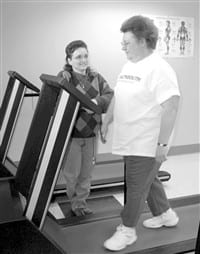Understanding Depreciation Know the Rules for Equipment, Technology, and Software Updates
As technology advances, your practice may need to update equipment or software to stay current with the latest developments. If you are considering these types of purchases, there are some rules you should be aware of from a tax and financial-statement perspective.
Namely, when recording transactions onto your books, you will need to determine whether the item in question is a consumable product or if it is a capital asset that will be expensed over a period of time, which would be the useful life of the asset.
A consumable product is defined as an item that is intended to be used up and then replaced. Depending on the size of your practice, this will sometimes determine what an expense item is defined as. The definition may vary among different practices depending on the normal purchases from a month-to-month basis. For example, a small practice may buy one computer at $200 and decide to expense this because the amount is immaterial. A larger practice may want to depreciate the transaction if they buy 10 computers all at once, creating one invoice of $2,000.
Some accountants will decide whether to depreciate or expense an item depending on the amount, or they will cater to your practice. If your capitalizing practice is based on amounts, some will simply say any item under $500 can be expensed on the current year profit-and-loss statement.
Some medical practices purchase large supplies that can be expensed because it is a special situation and truly is a supply, rather than a fixed asset. For example, if a practice has a patient who needs something specific to their circumstance and this product will not be used for multiple years, this could be expensed in the current year. Another example would be a one-time licensing fee. There are license agreements that need to be renewed every year. Even though these amounts may be above the limit your practice determines as the cutoff for either expensing or depreciating, these kinds of expenses should be a current-year deduction.

A Word of Caution
The IRS currently has no safe-harbor threshold related to capitalization vs. expense. Strictly interpreted, the IRS requires all items purchased to be capitalized if they do not meet the consumable product test.
To capitalize a product means that you are putting an item in a balance-sheet account rather than an expense on the income statement. If a product is determined to be above the limit your practice has set to expense an item, you will need to depreciate it over the useful years of the item.
A capitalized item will generally have a service life of five to seven years. Furniture and fixtures are an example of products that will last for years and do not need to be replaced every year. Examples of other items that need to be capitalized include exam tables and other such equipment. Most renovations beyond cosmetic painting would have to be capitalized since they improve the facility.
Once you have determined an item should be capitalized, you will then need to calculate a useful life. Medical equipment is often depreciated over five or seven years. Renovations classified as leasehold improvements have a 39-year life regardless of the term of lease. This means that the item will be depreciated over the useful life of the asset, showing a portion on the profit- and-loss statement for the following years. Depreciation allows the item to be deducted for the assumed amount of years that this piece of equipment will be helping the practice increase its revenue.
If you decide an item needs to be capitalized, there are two other options that could allow you the total deduction in the current year. Section 179 allows an election to expense the cost of a capitalized item in the year of purchase. This election is available for both new and used capital equipment; however, there are limitations that apply. The practice generally needs taxable income in order to take this deduction, unlike bonus depreciation, which can be taken regardless of taxable income. Bonus depreciation can be taken on qualified new purchases during the year. This allows 50{06cf2b9696b159f874511d23dbc893eb1ac83014175ed30550cfff22781411e5} of the total cost to be deducted in the first year.
Bottom Line
Although there are many gray areas as to whether to call an item a consumable product or a fixed asset, your practice should have set guidelines that work for you. Every practice is different; depending on the level of your ‘normal’ expenses, you should establish a capitalization policy. Remember, if the IRS conducts an audit on your books, it may dispute a current-year expense if they feel the item has a useful life over 12 months, and require that item to be capitalized. v
Rachel Curry is a tax associate with the Holyoke-based public accounting firm Meyers Brothers Kalicka, P.C.; (413) 322-3488; rcurry@mbkcpa.com



Comments are closed.